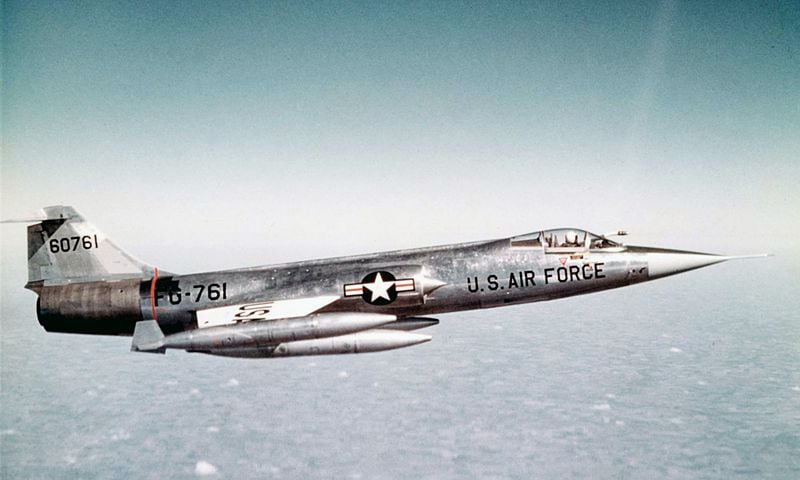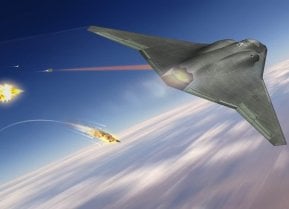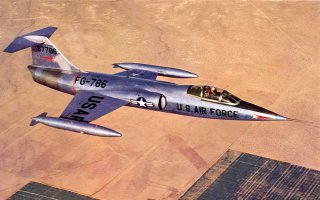From Mach 2 to 'Flying Coffin': The Legacy of the F-104 Starfighter
The Lockheed F-104 Starfighter, developed by the legendary Skunk Works under Clarence “Kelly” Johnson, was a groundbreaking aircraft known for its Mach 2 speed and sleek design. Introduced in 1958, it served in the Vietnam War and multiple international air forces.
Summary and Key Points: The Lockheed F-104 Starfighter, developed by the legendary Skunk Works under Clarence “Kelly” Johnson, was a groundbreaking aircraft known for its Mach 2 speed and sleek design. Introduced in 1958, it served in the Vietnam War and multiple international air forces.

-Despite its advanced capabilities, the F-104 was plagued by high accident rates, earning nicknames like "Widowmaker."
-It was retired by the U.S. Air Force in 1969 but continued to fly in countries like Germany, Italy, and Pakistan, where it achieved its first air-to-air kill. Today, the F-104 is remembered for its historical significance and controversial service record.
The Rocket with a Man in It: Exploring the F-104 Starfighter's Impact
The Lockheed F-104 Starfighter came from a veritable blueblood of an aircraft family. That being Clarence “Kelly” Johnson and his legendary “Skunk Works” program. Among the many fabulous creations spewing from Mr. Johnson’s Skunk Works was the SR-71 Blackbird – still the world’s fastest air-breathing aircraft – and the WWII P-38 Lightning, which was used by America’s “ace of aces,” Major Richard Ira Bong, to score all 40 of his air-to-air kills.
With a pedigree like that, you’d think the F-104, aka “the rocket with a man in it,” would have equally high-flying (bad pun intended) levels of success. But it didn’t quite work out that way.
F-104: Not a Total Failure, But…
The Starfighter made her maiden flight on March 4, 1954, and officially entered service on February 20, 1958. A total of 2,578 planes were built.
Though it didn’t totally live up to expectations, the F-104 still made history. It was the first operational aircraft to sustain Mach 2 speed (1,534 miles per hour/2,469 kilometers per hour) in flight.
During the Vietnam War, the Starfighter served the U.S. fairly well from April 1965 to July 1967. It flew a total of 5,000 sorties during the conflict, and North Vietnam’s pilots never challenged one in combat. Not all of the birds stayed in the air, however, 14 F-104Cs were lost in Southeast Asia – six to groundfire, four to non-combat causes, three to Soviet SA-2 surface-to-air missiles, and one to a Chinese Shenyang J-6 fighter while suffering a navigation systems failure near China’s Hainan Island.
The Starfighters’ primary mission was escorting Lockheed EC-130 motherships carrying drones and the “Big Eye” early warning (radar-equipped) planes. The latter provided surveillance support to U.S. aircraft over North Vietnam. Starfighter pilots also conducted strike and close-air-support missions in North and South Vietnam, as well as Operation Iron Hand missions to destroy North Vietnamese SAM sites.
However, the F-104 suffered from short-range, obsolete avionics, high landing speed, and until late 1967, an unreliable engine. All of these factors served to stunt the plane’s long-term growth potential. Besides the aforementioned “rocket with a man in it” label, as well as the nicknames of “Zipper” or “Zip,” the F-104 was also dubbed with the far more tragic sobriquets of “flying coffin” and “Widowmaker.” This was due to the fact that it suffered over 30 mishaps per 100,000 flight hours. As noted by Robert Farley, “Over 50% of F-104s in Canadian service were lost in crashes, over 30% in German.” The active-duty component of the U.S. Air Force would retire the bird in 1969, and the Air National Guard followed suit in 1975.
F-104 Starfighter “Stars” in Foreign Air Forces
Despite the morbid reputation of this so-called “flying coffin,” it continued to serve in multiple foreign countries’ air forces well after the U.S.-owned Starfighters were retired, including NATO allies Canada, Germany, Turkey, the Netherlands, and Italy. For good measure, the “Zip” was also chosen by non-NATO allies such as Japan and Pakistan.
Regarding the post-WWII Luftwaffe in particular, the official Lockheed Martin website notes that upon joining NATO on May 9, 1955, then-West Germany needed a viable replacement for the outdated jet fighters on loan from the U.S. and Canada. “After German officials witnessed the flight of an aircraft already in production – the sleek, yet durable, Lockheed F-104 Starfighter – they instantly knew they had found the ideal plane.”

In fairness to the plane’s deathtrap reputation, “Lockheed would then launch specialized training programs funded entirely by the company to familiarize inexperienced German pilots with their new planes, drastically reducing the number of in-flight accidents.”
The Italians, for their part, kept their “Zippers” in service until 2005. But it was a non-Western nation, Pakistan, that notched the F-104’s first air-to-air kill. During the 1965 Indo-Pakistani War, on September 6, 1965, Pakistani Air Force Flight Lieutenant Aftab Alam Khan shot down an Indian Air Force Dassault Mystère IV and damaged another.
Where Are They Now?
Stateside, military aviation museum buffs who wish to see a Starfighter in-person have a variety of venues to choose from. Exhibits include the Smithsonian National Air and Space Museum in Washington, DC, and the Wings Over the Rockies Museum in Denver, Colorado. Additional surviving aircraft are preserved at museums and airfields scattered across 17 different foreign countries.
F-104 Specifications/General Characteristics
Crew: 1
Engine: General Electric J-79-7A turbojet with 15,500 pounds of thrust
Wingspan: 21 feet, 9 inches
Length: 54 feet, 8 inches
Max. weight: 27,853 pounds
Max. speed: Mach 2.2
Combat radius with two wing tanks: 294 nautical miles
Operating altitude: 58,000 feet
Armament: One M61A1 Vulcan 20mm cannon; two to four AIM-9 Sidewinder air-to-air missiles
Bomb load: Two 750-pound bombs or rocket pods
About the Author
Christian D. Orr is a former Air Force officer, Federal law enforcement officer, and private military contractor (with assignments worked in Iraq, the United Arab Emirates, Kosovo, Japan, Germany, and the Pentagon).
Main image is from Shutterstock. All others are Creative Commons.


